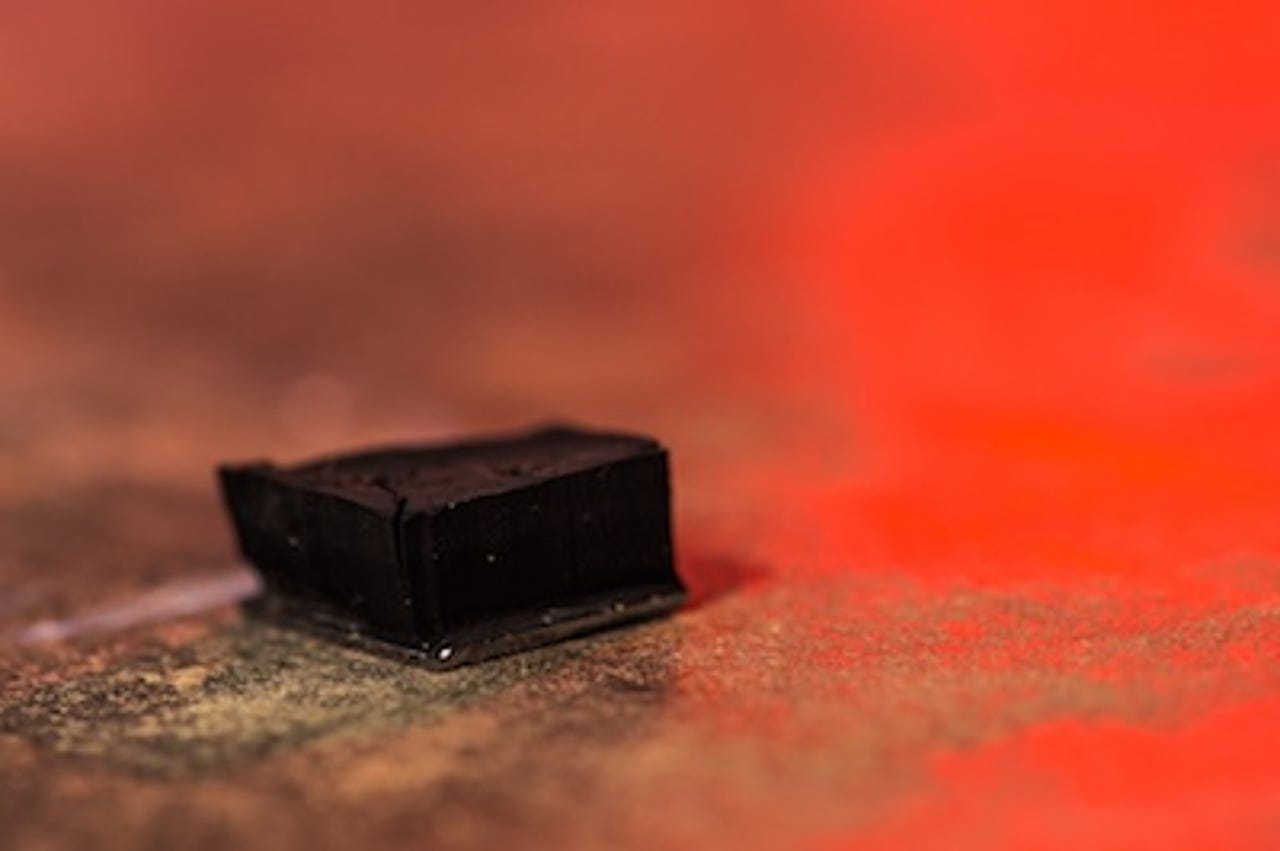How to pull water from air


At home in the deserts of southern Africa, Stenocara gracilipes survives by drinking water molecules from the early morning fog. Science explains:
To survive in its arid environment, the Namib Desert beetle has developed a pattern of water-attracting and water-repelling molecules on its hardened wings, forming a series of peaks and troughs. By angling its body into the wind, the beetle can use this pattern to gather water molecules from the morning fog, forming droplets that are directed down into its mouth.
So, taking the beetle's lead, Pulickel Ajayan and colleagues from Rice University applied a top layer of water-loving polymers and a bottom layer of water-repelling polymers to a tiny forest comprised of cylinders of carbon atoms. The carbon nanotube forest is about a centimeter tall and only a few nanometers across, and they call it a hygroscopic scaffold.
Millions of carbon nanotubes are contained in that small block pictured above. You can see the hydrophobic side (left) and the hydrophilic side (right) in these electron microscope images:
The superhydrophilic part of the carbon nanotube forest attracts water molecules from the air and the superhydrophobic side keeps the water trapped inside. "You can squeeze the forest to take the water out and use the material again," Rice's Sehmus Ozden explains in a news release. Otherwise, the water will slowly evaporate into the atmosphere over time.
In tests, water molecules bonded to the hydrophilic top and penetrated the forest through capillary action and gravity. Once a little water bonds to the forest canopy, the effect multiplies as the molecules are drawn inside, spreading out over the nanotubes and drawing more water in. The forest remained intact even after collecting 80 percent its weight in water.
The amount of water vapor captured depends on the humidity of the air. An 8 milligram sample (with a 0.25-square-centimeter surface) pulled in 27.4 percent of its weight over 11 hours in dry air and 80 percent of its weight over 13 hours in humid air.
The new water collection device doesn't require any external energy, Ozden says, although the production costs of carbon nanotube arrays at a scale necessary to put the invention to practical use remains a bottleneck. "If it becomes possible to make large-scale nanotube forests," he adds, "it will be a very easy material to make."
The work was published in American Chemical Society's Applied Materials and Interfaces.
Images: Jeff Fitlow/Rice University (top) & Ajayan Group/Rice University (middle, bottom)
This post was originally published on Smartplanet.com